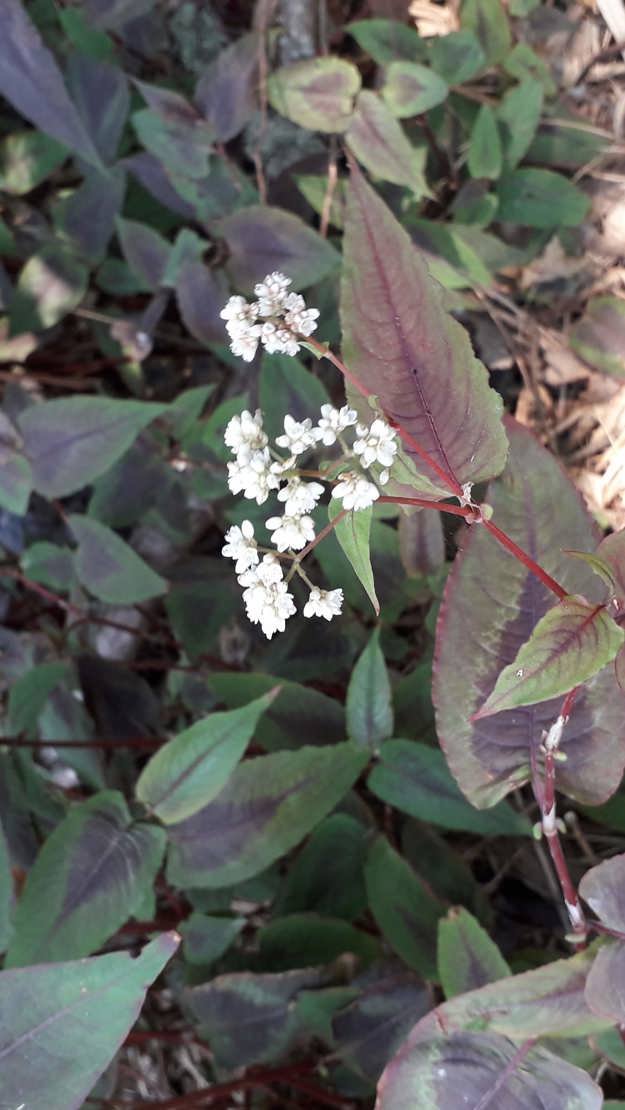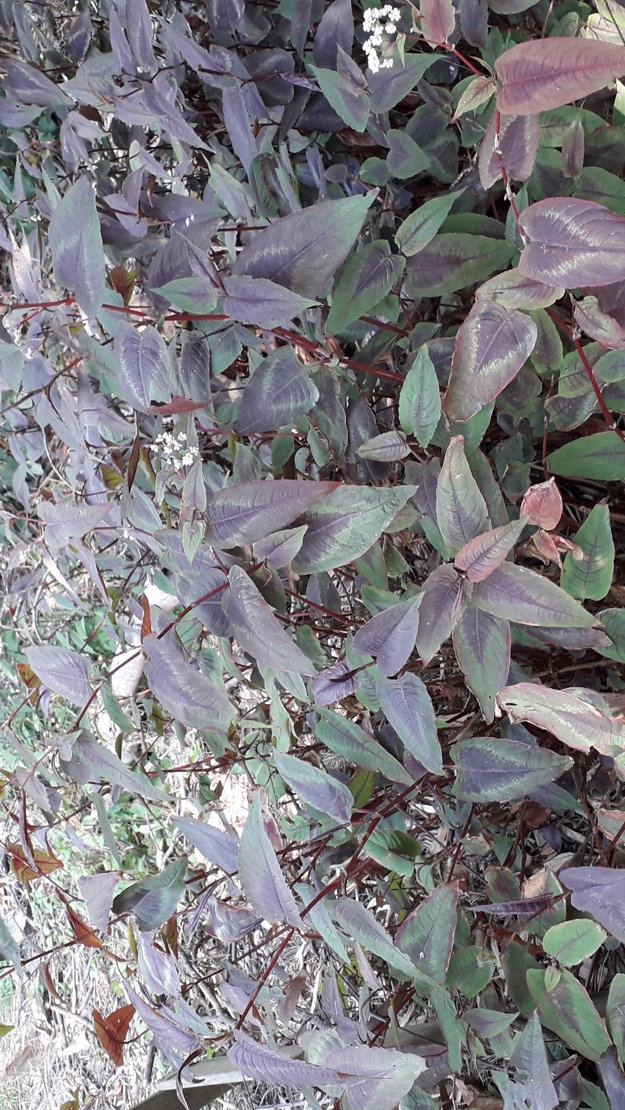Persicaria microcephala
Red dragon
Family: Polygonaceae
Origin: China

Regional Pest Management Plan (RPMP) status
- Whole region — Sustained control
- Hauraki Gulf Controlled Area Notice pest
General description
Climbing, scrambling, rhizomatous, perennial, herbaceous vine. Leaves turn red in spring. Flowers are small, white/pink and borne in inflorescences in autumn.
What you need to know
To help protect our environment, from 1 September 2021, you:
- will not be allowed to breed, distribute, release or sell red dragon within the Auckland region.
- will not be allowed to plant red dragon within the Auckland region, unless you are transferring an existing plant on your land to another location within the boundaries of the same property.
- must destroy any red dragon on land that you occupy if it has been planted in breach of the above rules and you are directed to do so by an authorised person.
Habitats
Riparian and forest margins.
Dispersal
Vegetative spread from rhizome and stem fragments. Human-mediated dispersal through dumping of garden waste and deliberate plantings.
Impact on environment
Forms dense mats up to 1 m tall or taller and scrambles over vegetation.
Control
Site Management
Follow up treated areas 3 times per year. Encourage natural regeneration of native plants or replant treated areas where possible after 2-3 treatments to establish dense ground cover and minimise reinvasion.
Recommended approaches
Physical control
Method: Dig out.
Plant parts requiring disposal: All parts.
Disposal options: Remove to greenwaste or landfill.
Biocontrol
Biocontrol is currently not available for this species.
Community agrichemical control recommendations
No qualifications: Foliar spray in summer with 100ml glyphosate green per 10L of water.
Certified Handler/Experienced agrichemical user: Foliar spray with 200ml glyphosate green and 3g metsulfuron-methyl per 10L and 20ml penetrant.
Caution: When using any herbicide or pesticide please read the label thoroughly to ensure that all instructions and safety requirements are followed.




